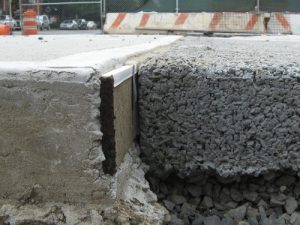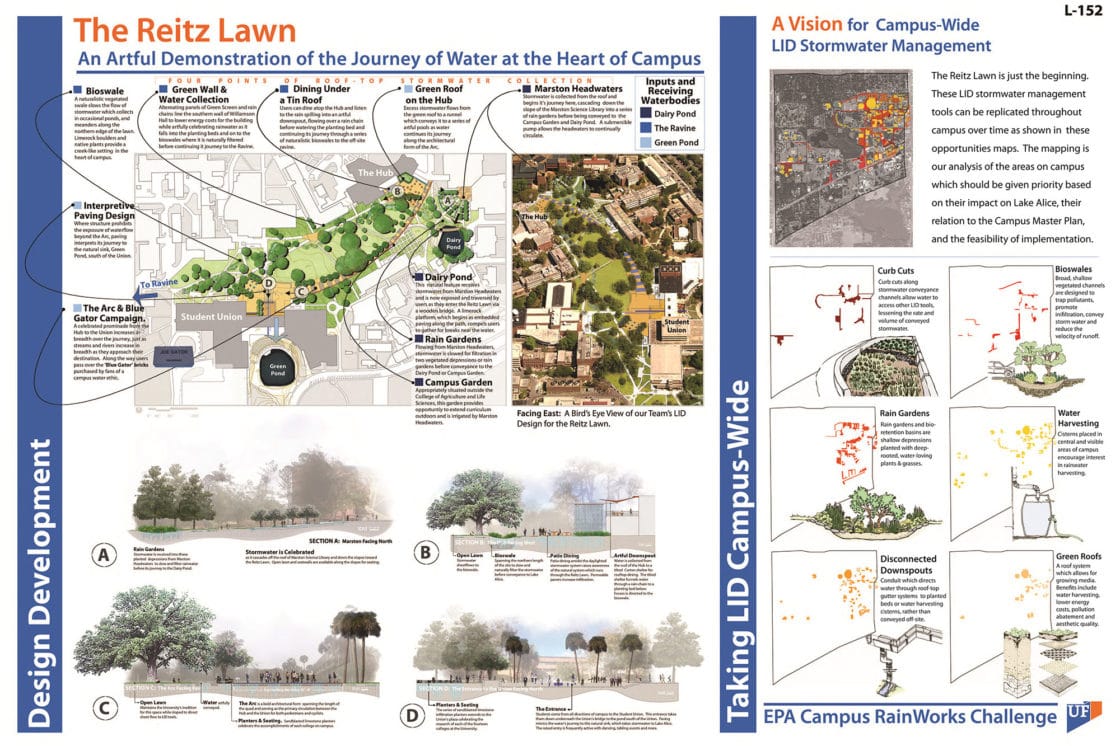
EPA looks to incorporate green infrastructure into new stormwater regulations in 2014
Spring 2014 will likely see the long-overdue proposed national stormwater regulation from the EPA. In addition to anticipated changes such as stronger reporting requirements, publicized Stormwater Pollution Prevention Plans (SWPPP), and clarified corrective action conduct, the EPA aims to integrate green practices and infrastructure into stormwater initiatives. These initiatives will have positive impact to both the environment and the economy.
Impact of Stormwater
Urban stormwater is a leading source of impairment, and its impact to water quality is growing. Currently, 800,000 acres are being developed annually, and that number is expected to grow to over one million acres by 2040. Development increases impervious cover, and even the smallest increase in impervious cover causes major impact to water reception. In addition, upstream development directly affects downstream waters, and many communities already have waterbodies that have been polluted by stormwater discharge. Clearly, innovative and effective stormwater management practices are imperative to the health of our nation’s waters.
Changing the Way We Approach Stormwater Management
Traditional stormwater management strategies involve the swift conveyance of stormwater from site to waterbody or detention ponds, and the management of peak flows and drainage to mitigate flooding and large-scale downstream erosion. The new approach to stormwater will be to manage municipal stormwater discharges on a watershed basis, particularly MS4 communities, and to integrate green infrastructure into project design during development or redevelopment. This green approach will provide the most cost-effective opportunity to manage stormwater at its source by preventing water quality degradation in healthy waters and helping to restore already impaired waters.
The EPA is considering a number of performance standards for the upcoming proposed ruling, including a retention-based standard to require that sustainable stormwater controls be incorporated into sites as they are developed and redeveloped, thereby reducing volume and velocity of discharges as well as pollutants. The EPA has made it clear that there are indeed cost-effective ways of meeting the standard, including incorporating controls in the site design by preserving vegetation and reducing impervious cover, and integrating green infrastructure practices into landscape or other common areas. The ruling will contain some flexibility, taking into consideration an area\’s climate and other location-specific characteristics as well as redevelopment site constraints and phased implementation. In addition, there may be additional incentives for smart growth and brownfields development.

Benefits of a Proposed Stormwater Rule
- Improved recreational, aesthetic and non-use values
- Lower drinking water treatment costs
- Lower dredging costs for navigational channels
- Reduced siltation of water storage reservoirs
- Reduced downstream flooding damage
- Groundwater recharge
- Small stream erosion and water quality impacts
Vegetation
- Improved air quality and reduced human health impacts
- Higher off-site property values associated with green infrastructure
- Carbon uptake by plants
- Reduced energy use by buildings and associated air quality
- Carbon footprint benefits
Community
- Reduced flooding
- More livable communities
- Increased property values
- Avoidance of extremely high costs of water restoration
Students at the University of Florida won the EPA\’s 2012 Campus RainWorks Challenge with this green infrastructure design. Read about it in detail here.
In Conclusion
It is imperative that we protect our nation’s most precious resource, and stormwater management is a crucial facet of that goal. The expected spring 2014 EPA stormwater rulings will likely bring significant green infrastructure initiatives, and not a moment too soon. Green infrastructure will serve as an impetus for the critical and cost-effective protection of our water supply with the added benefit of enhancing the world in which we all live.

